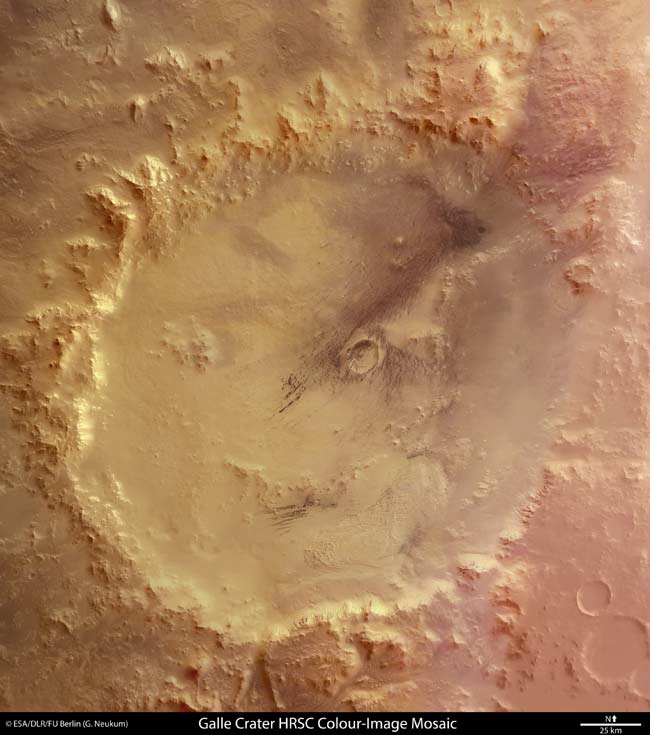Happy Face on Mars Exposed

With a few hills, some shadow, and a heavy dose of imagination, you can see a lot of things on Earth or in a space rock that are not there.
In this realm of false sightings, Mars reigns.
Mars has a heart, for one. And then there's the mile-long translucent worm. The most famous example is the Face on Mars, the one that some people believe to be the construct of an intelligent civilization.
Less controversial is the Happy Face on Mars, first noted in NASA's Viking Orbiter mission. Nobody seriously thinks it's actually something that's been built. And new photos would lay to rest any wild ideas along these lines.
From straight overhead, the Happy Face resembles that ubiquitous yellow smiling sticker. But seen in a new perspective view by the European Space Agency's Mars Express orbiter, the smile is wiped from the landscape, becoming nothing more than a line of mountains.
The smiling mountains sit within the Galle Crater, a hole in the ground dug by a space rock and whose rim forms the outline of the face. It is located on the eastern rim of the Argyre Planitia impact basin. Galle is 143 miles (230 km) wide.
The new images were released today.
Get the Space.com Newsletter
Breaking space news, the latest updates on rocket launches, skywatching events and more!
Spotting things that don't exist-on Mars or in clouds-is called pareidolia. A study last year found that humans are particularly susceptible to seeing human faces where there are none, because our knowledge of the human face is so ingrained in our brains.
- Gallery: Visualizations of Mars
- The Real Story Behind Mysterious Space Photos
- Face on Mars: Why People See What's Not There
- The 10 Best Mars Images Ever
Join our Space Forums to keep talking space on the latest missions, night sky and more! And if you have a news tip, correction or comment, let us know at: community@space.com.

Rob has been producing internet content since the mid-1990s. He was a writer, editor and Director of Site Operations at Space.com starting in 1999. He served as Managing Editor of LiveScience since its launch in 2004. He then oversaw news operations for the Space.com's then-parent company TechMediaNetwork's growing suite of technology, science and business news sites. Prior to joining the company, Rob was an editor at The Star-Ledger in New Jersey. He has a journalism degree from Humboldt State University in California, is an author and also writes for Medium.









